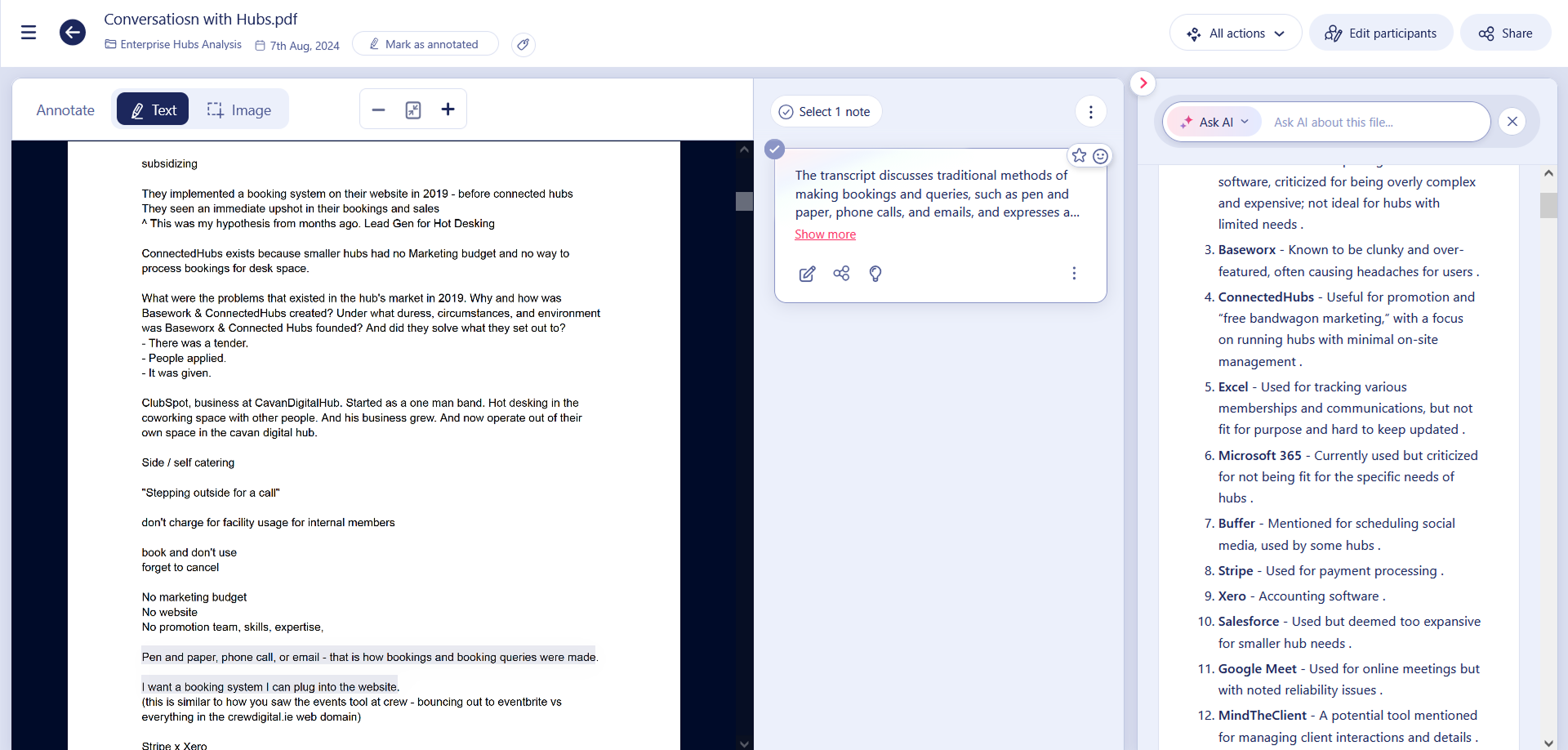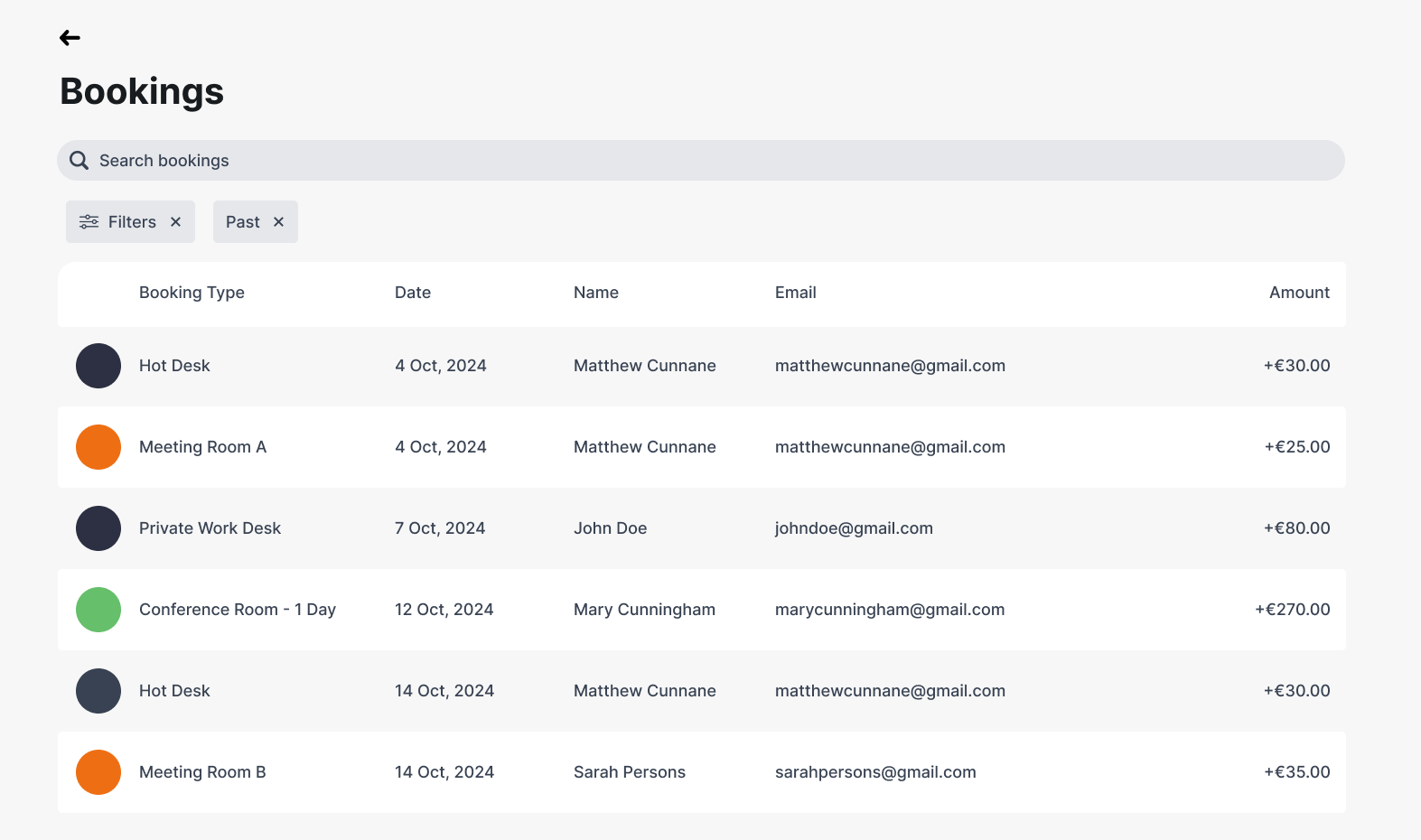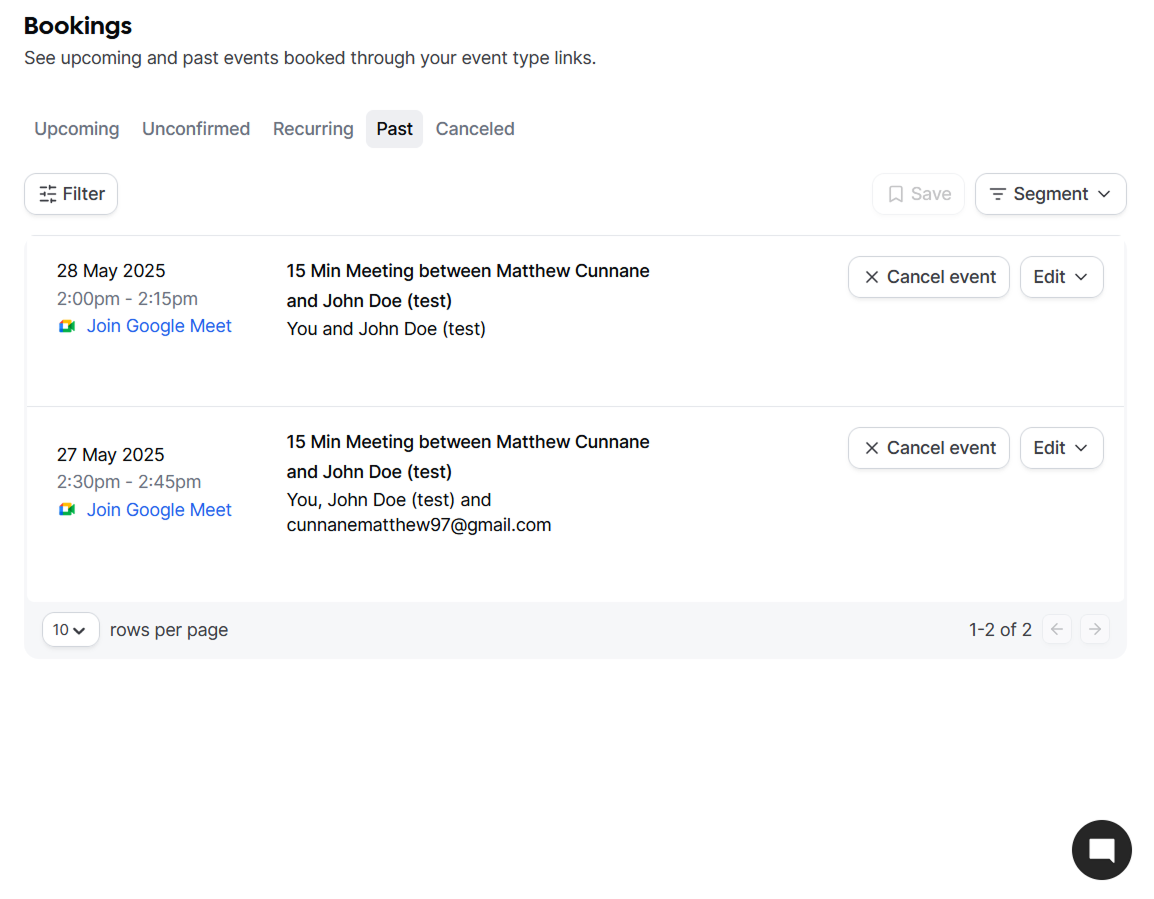✨ The Details
- Role: Founder, UX/UI Designer, User Researcher
- Timeline: July 2024 – February 2025
- Type: B2B SaaS / Digital Service Design
- Tools: Figma, Google Meet, AI-assisted synthesis, Hey Marvin, Notion
- Skills: UX Research, Product Strategy, Service Design, Prototyping
🔎 Overview
HubBook is a B2B platform and service designed to help coworking spaces manage and promote their business more effectively. The idea was born from my first-hand experience as a frequent user of coworking spaces and was validated through extensive interviews, customer discovery, and market research.
I led the project end-to-end, from initial ideation to UX research, product strategy, and early-stage validation. As a solo founder and designer, I was responsible for every part of the process.
While validating the core need was relatively straightforward, the biggest challenge came in executing the full product vision without a team. Ultimately, the project didn’t reach launch, but it taught me invaluable lessons about burnout, founder pace, and the importance of cross-functional support.
🧩 Problem & Research
🧠 Identifying the Problem
While coworking hubs varied in size, function, goals and funding, I discovered a consistent thread across nearly all of them: friction with their chosen digital tools. Whether they used premium, low-cost, or even custom-built platforms, the same problems persisted — not because the software was inherently broken, but because the teams using them lacked the time, training, or digital aptitude to implement and maintain them properly.Through qualitative interviews and research, I discovered common struggles shared by coworking hubs regardless of location or funding level. These included:
The root issues weren't feature sets or pricing tiers; they were organizational constraints:
- Limited manpower and staff availability
- Minimal time to onboard or troubleshoot software
- Insufficient funding or digital literacy support
- Weak onboarding and customer support from software providers
These operational bottlenecks revealed a larger opportunity: coworking hubs didn’t just need software, they needed smarter, more accessible service layers around that software.
🔍 Research Process
My research process was deeply grounded in qualitative, primary-source discovery. I conducted over 40 interviews with hub owners, operations managers, digital support staff, and users. I spoke with:
- Hub operators and managers
- Freelancers and remote workers using the hubs
- Local public bodies and charities connected to these spaces
- Startup ecosystem stakeholders
These interviews were held in person, online, and opportunistically at local business and tech events. I recorded and annotated each conversation, capturing not just answers but underlying themes. I used a combination of SWOT analysis, note synthesis, and even AI tools to cluster insights into actionable takeaways.

Above Image: HeyMarvin - User Research AI Assistant
This gave me a clear, grounded understanding of the operational workflows and daily pain points across the coworking ecosystem. Insights that couldn’t have been uncovered with surveys or desk research alone.
💡 Key Insight
One of the most unexpected discoveries was that the most successful coworking hub in the study — in terms of retention, user satisfaction, and digital adoption — received the least external funding. Their secret? A founder who remained hands-on, consistently reinvested profits into tools and digital processes, and treated growth as an ongoing process of iteration.
🛠️ Design Process
✏️ Initial Concept
The earliest version of HubBook resembled a cleaner, more user-friendly coworking SaaS platform. Similar to Cal.com in structure and flow. The focus was on improving how hubs managed bookings and payments, both in terms of usability and visual design. The goal was to build something more intuitive, streamlined, and less overwhelming than the fragmented tools hubs were currently using.

Above Image: HubBook UI - Bookings Log Page

Above Image: Cal.com UI - Bookings Log Page
🔁 Testing & Iteration
I approached testing in a conversational, collaborative way. I started with open-ended discussions around pain points, which transitioned into interviews with low-fidelity Figma mockups and workflows I designed. These designs were exploratory by nature, and I shared them directly with key stakeholders — the same operators and managers I had interviewed during research.
This rapid iteration cycle, capped at a two-week sprint, allowed me to refine ideas quickly. Feedback loops were short and grounded in real-world context. Through this sprint, I was able to move beyond speculative design and find clearer signals on what would actually be useful.
🔀 The Pivot
The breakthrough in testing did not come from tweaking the prototype, but from realizing that the hubs didn’t need new software. They needed to be able to implement the software they already had to a higher standard.
I shifted from designing a new tool to building a service-based solution. HubBook became a digital enablement offering focused on the operators and staff working on managing bookings, payments, and marketing.
🚀 Outcome
HubBook ultimately did not launch. Despite validating a clear need and building strong early engagement around the service idea, I reached a point where the lack of a full skillset, limited runway, and the toll of working solo led to burnout. These challenges halted the project before I could bring the service to market.
However, the idea resonated deeply with those operating coworking spaces and traveling professionals. While larger business owners acknowledged the concept, the day-to-day challenges simply weren’t close enough to their roles to spark urgency. Among hub operators, the feedback was clear: “We need this.”
During the project, I created:
- A full business plan and strategic rollout roadmap
- A pitch deck, delivered bi-monthly to UCC IGNITE Accelerator advisors
- A public pitch at the UCC Business Showcase Awards
🧠 Reflection
🤝 People First
One of my biggest takeaways was the value of collaboration. Not just in formal teams, but in daily working environments. Being surrounded by others who are building, learning, and iterating is invaluable. Working alone taught me a lot, but also showed me how essential community and teamwork are to resilience and momentum.
⚡ Build Fast, Then Reflect
This project reinforced my belief in action over perfection. I learned that it’s better to make a decision and move, even if it’s in the wrong direction. You can always course correct. Paralysis through overthinking or over-advising can stall a good idea before it even gets tested. Ultimately, only you know what to do next. You learn by doing.
🧭 Next Time
I would test earlier, even if the thing being tested was just UI in Figma or a no-code prototype. If you can simulate the product experience and gather real reactions, you’re already far ahead.
🔍 As a UX Designer
This project reaffirmed that qualitative research is foundational. Done well, it can define your north star. From that, you can derive clear objectives and make product decisions by asking a simple question: “Does this solve for X?” If not, move on. If yes, build on it. This lens keeps product development focused, lean, and user-centered.